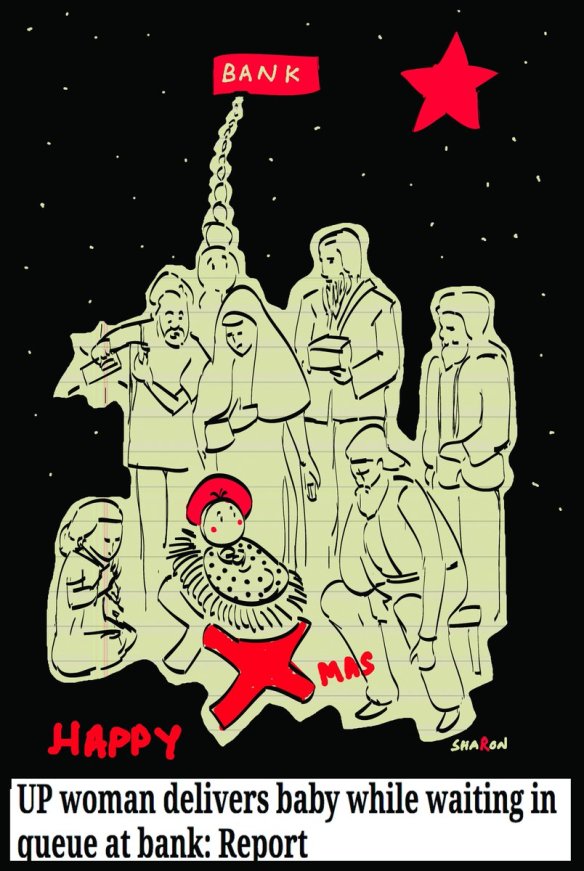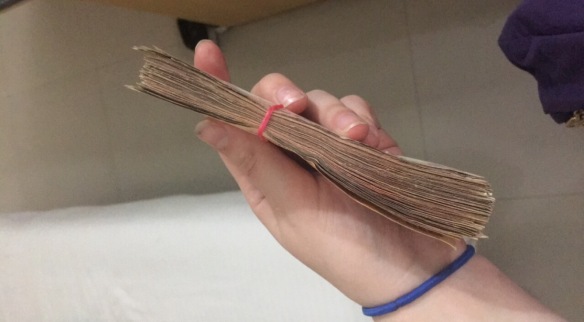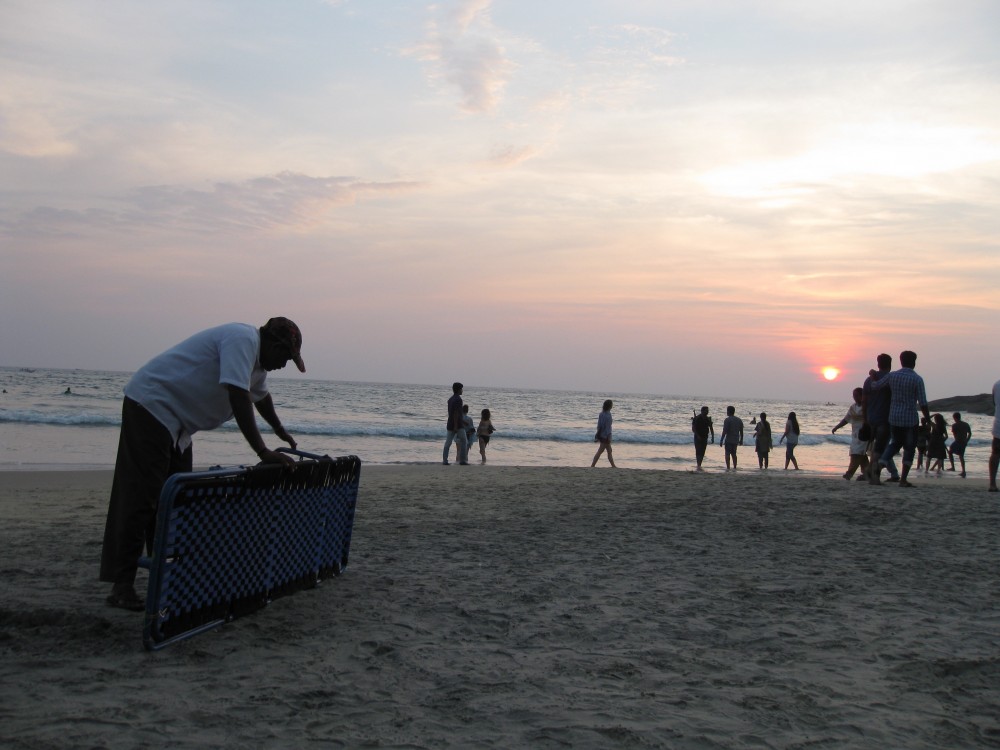
Sharon Rani’s cartoon about the long waits at the bank to exchange 500 and 1000 rupee bills.
On November 9 2016, six weeks before I was to arrive for a 3 week cultural immersion course with a co-professor and 12 students from the University of Iowa, the Indian government pulled all the 500 and 1000 rupee bills (equivalent to U$ 7.50 and U$15 respectively) out of circulation. The motivation for this dramatic policy is well analyzed and in this short (and very readable) article by economic professor Kaushik Basu. From a distance, it sounded as if this policy would have the strongest impact on the poor in this very cash-oriented economy. Imagine being a rickshaw driver or a day laborer when people no longer had cash to pay!
Two kinds of lines formed. One to exchange the 500 and 1000 rupee notes at the bank and the other was outside any ATM that had cash.
We met with the UI students and encouraged them to “enjoy” going to India during this major historical event. Just to be sure, they brought US dollars to exchange if needed. It turned out that we all had to go to several ATMs to find a machine that had cash. Limits were placed on how much could be withdrawn-2500 INR until January 1, when the limits were lightened. Our inconvenience was mild compared to the hardship for the poor during the weeks prior to our arrival.
And there were confusing moments for us-getting over fifty bills as change:

Photo courtesy of Grace Payden
Or wondering if this sign on a lavender wall designed to discourage graffiti had something to do with demonetization:
My father was an historian. When he faced his daughter who wanted to go to Nicaragua during the Sandinista government rule in 1983 to shadow rural health workers, (an unpopular proposal among some family members) he said “Ann, you can either participate in history or stand by and watch.”
